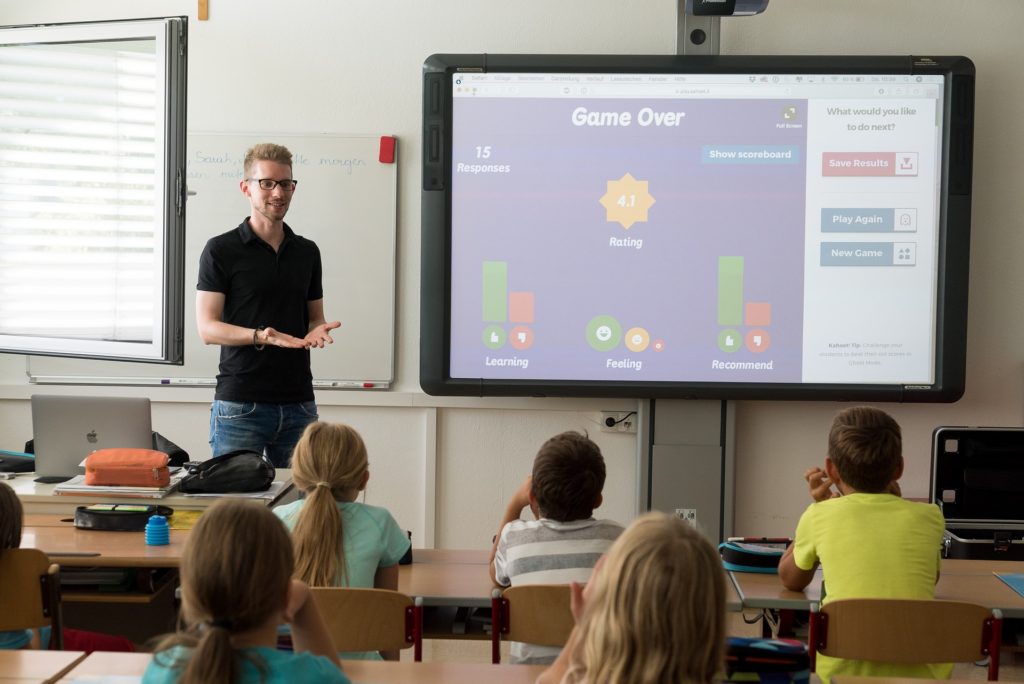
Yesterday, I read an article in one of my English teacher groups, and it touched my heart dearly. The article was written by a veteran teacher that shadowed two students for two days. His personal reflection had me thinking about my own teaching style. He stated that students sat in class without talking and with limited interaction. He continued to state that teachers were lecturing a majority of the time. His suggestions were to have students move around and do a think-pair-share. Before reading the article, I made a teacher goal to have each class perform a think-pair-share daily within the class.
I made the decision to incorporate think-pair-share within each lesson because I saw the benefits of sharing thoughts with a fellow classmate and the positive energy from students. It is also included in the walk-through form. A think-pair-share is part of the direct instruction lesson. According to Marzano, a think-pair-share involves, “The teacher asks students to think critically about a question, pair up with another classmate to come to a consensus on their answer to the question, and then share their response with other groups or the whole class” (31).
How I use Think-Pair-Share with My Class
- I introduce the learning target and begin with a question of the day.
- I ask questions about the previous lesson to connect the learning from the previous lesson to the current lesson.
- Next, I introduce new information to the class. It may be a reading passage, an article, or nonlinguistic representation.
- Students reflect on the text and write a short reflection on it.
- I pose a question on the text, and students perform a think-pair-share with their elbow partner. I give students two or three minutes to talk.
- Sometimes I may say, “think-pair-square” and that includes four people in the discussion.
- Students are then instructed to work independently on the text.
- I close the lesson with an exit slip or use the random names strategy for questioning.

What Improvements I Have Witnessed with Think-Pair-Share?
During the think-pair-share strategy, I have witnessed students making new discoveries and thinking creatively and critically. This strategy promotes high levels of classroom participation because every student has to listen and share their thoughts. Students are able to write their thoughts down and share them with a peer, where a peer can agree or share a different viewpoint. Students appear more confident in sharing their thoughts with one person than a whole class. I observe and listen to answers to assess students’ understanding of a topic, and it helps guide my instruction. I may need to review the lesson or continue to have students work independently.
I also include the read, write, discuss, and revise strategy when I teach, which is very similar to the think-pair-share strategy. Students have an article to read, I have a question for them, they write down their thoughts, discuss it with their elbow partner, and finally, they revise the writing component. I have witnessed improved writing statements after discussions because of shared ideas. Students are able to share information and gain the insight they did not think of because they shared their ideas with a classmate.
How Do You Get Started?
You must prepare for the lesson for it to go smoothly. Have an article or text and a list of high-level questions ready for your students. You can assign pairs of students based on their academic ability, or you can have them discuss the topic with their elbow partner. Describe the strategy to the students and include rules for discussion. Explain to the students they will think independently on a question. Next, students will pair with a partner and discuss the question. Finally, the pair will share the ideas with the whole class. After all the pairs have shared with the class, you can have pairs discuss the whole class discussion.

This strategy is dependent on class participation because of its pair and whole-class discussions. As students continue this strategy, they feel safe to share their thoughts, and as a teacher, you can pose analytical or knowledge utilization (higher Marzano Taxonomy) questions. As a teacher, I use this strategy to assess students. When I observe and listen to students, I make a mental note if I have to review a concept or if I want the students to move to independent work. Students like this strategy because it allows them to talk and be involved with the lesson. Overall, think-pair-share is a strategy that promotes critical and creative thinking from students.
Do you use the think-pair-share within your class? Tell me in the comment section below.
Work Cited
Marzano, Robert J, Debra Pickering, and Jane E. Pollock. Classroom Instruction That Works: Research-based Strategies for Increasing Student Achievement. Alexandria, Va: Association for Supervision and Curriculum Development, 2001.




Very good article. I will be going through a few of these issues as well..
Thank you!
Glad you liked it.